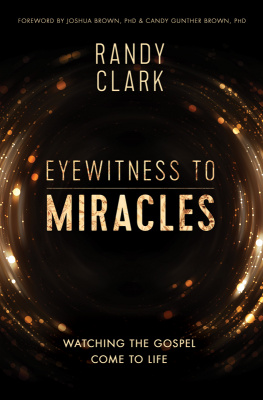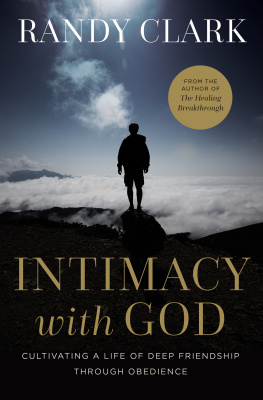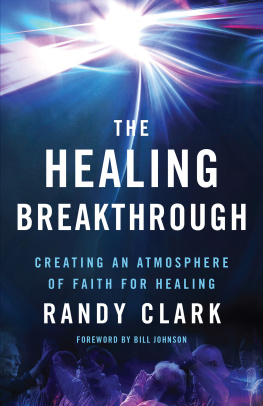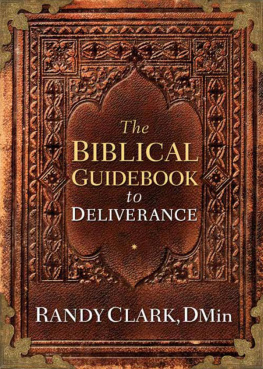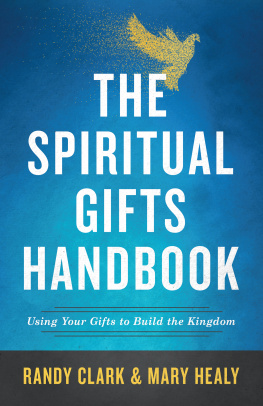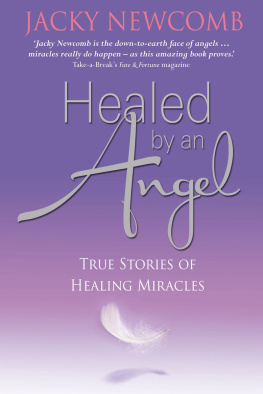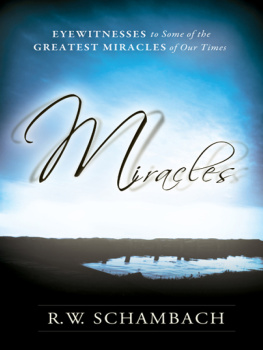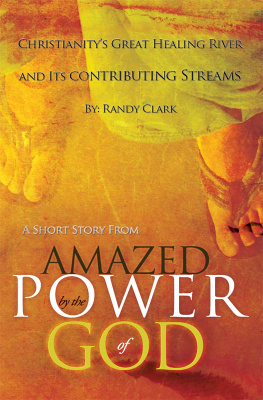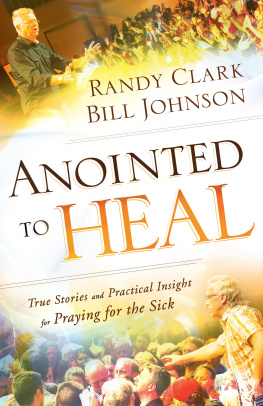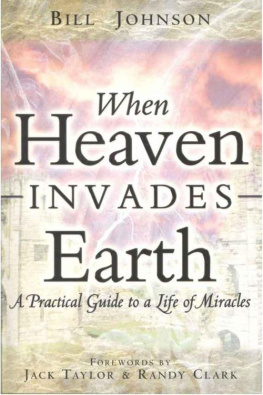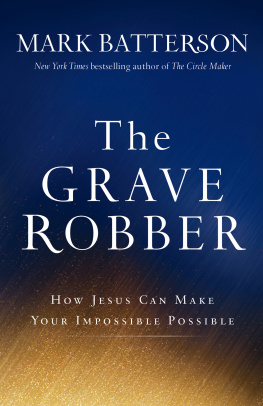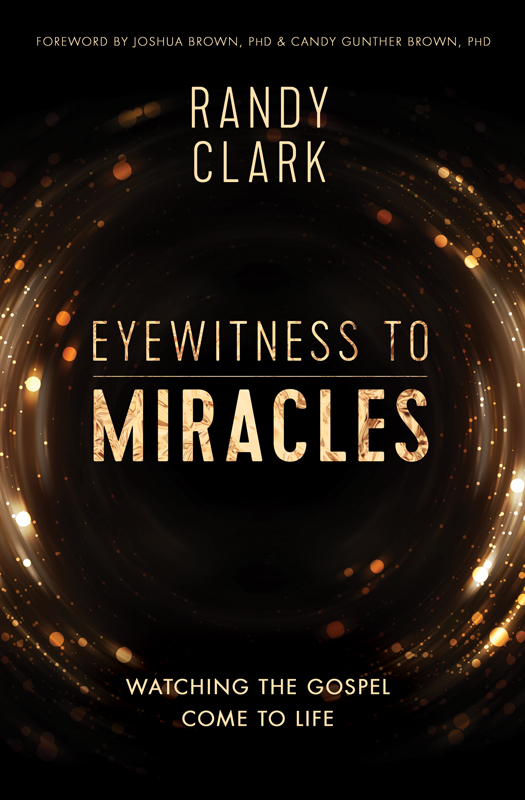CONTENTS
- PART ONE :
THE EVIDENCE FOR THE MIRACULOUS - PART TWO :
THE PROBLEM WITH MIRACLES IN THE WESTERN MIND-SET
Guide
A s a professor in the sciences at a large research university, I take a fairly critical view toward claims of scientific evidence. In science, the state of knowledge advances through critical inquiry, well-designed studies, and rigorous analysis. Over a decade ago, early in my career, I faced a personal health crisis in which I expected to die within a short period of time despite the best medical treatment. That experience, as it played out over about a year, motivated me to examine claims of nonmedical healing. I wanted to see firsthand what people experienced, and being the skeptical scientist that I am, I wanted to see what evidence there was, if any, that healings happened apart from medical intervention. My intention was to pick apart the experiences and evidence to see what could withstand critical scrutiny, for as much as I wanted healing for myself, I did not want to waste time entertaining grand claims devoid of evidence.
What I found first seemed to confirm my suspicionsfor the most part, the Pentecostal and charismatic Christians who reported healing through prayer seemed to care relatively little about evidence. They were content simply to testify about their healing experiences to an audience of the faithful, who required no proof. This bothered me. I noticed that leaders in other religious traditions were quite willing to have their practices and their effects examined with scientific methods, and admirably so in my opinion. No less than the Dalai Lama has made a point of reaching out to neuroscientists to study Buddhist mindfulness meditation and its effects on the brain. In my research field of cognitive neuroscience, a number of my academic colleagues have reported interesting results from their studies of Buddhist monks and mindfulness meditation. This in turn has greatly enhanced the influence of such practices on Western culture. Why, I wondered, did Christian communities place so little value on careful investigation and evidence of their own practices and claims?
It was against this backdrop that I first met Randy Clark in a large meeting in which he was a featured speaker. I was struck by how approachable he was, and in subsequent conversations, I was struck even more by how much he cared about research and evidence as it relates to prayer for healing. At the same time, my wife, Candy Gunther Brown, also began studying healing claims in her capacity as a professor of religious studies at a large research university. Randy Clark was instrumental in helping our research team get access to a number of populations where healing claims were common, especially with Heidi Baker in Mozambique and others in Brazil, Canada, and the United States. Out of that came a number of scholarly research works, including my wifes book Testing Prayer (Harvard University Press) and her article assessing hearing and vision improvement following healing prayer, published in the peer-reviewed Southern Medical Journal. This helped define a field of scholarly inquiry on proximal intercessory prayer.
After the initial round of research, Randy Clark, my wife and I, and other PhD and MD academics and medical researchers began to consider how we could scale up the research and bring critical inquiry to more healing prayer claims. Out of that we formed GMRI, the Global Medical Research Institute (globalmri.org), a 501(c)(3) nonprofit organization with the mission of bringing rigorous biomedical investigation and critical inquiry to Christian healing prayer practices. GMRI examines individual cases and controlled trials. For individual case reports, we look at medical records of individuals before and after claimed healings. We preserve their anonymity, and we consider all the possible ways their medical records could be explained. In some cases, we have found plausible medical explanations of claimed healings, but in others, our medical experts have found no plausible explanation, given the current state of medical knowledge. For controlled trials, we look at groups of individuals, asking whether particular faith practices and experiences are associated with different health outcomes on average. I am grateful for Randy Clarks enthusiasm for studying healing experiences and rigorously examining all available evidence, wherever it may lead. It is my hope that the value he places on medical evidence will inspire others in his community to likewise value evidence and scientific inquiry into healing claims. I believe this would be good for everyone, believers and skeptics alike.
In what follows, Randy Clark provides an excellent front-row seat for healing prayer practices and experiences, of which he has seen countless and often dramatic examples over the years. These are the kinds of claims that are both inspiring on a human level and a rich source of primary-source ethnographic research materials on an academic level. I, for one, am grateful to many Christians, Randy Clark among them, who prayed for my healing. Today, I am alive and well, despite an initially poor medical prognosis and the unavailability of any curative medical treatment. Randy Clark brings a unique perspective, weaving his extensive experience together with a historical review and his own theological perspectives. To his credit, he does not shy away from considering a number of explanations of the phenomena he observes, such as placebo effects. His dissertation work on individuals with surgically implanted metal, as summarized in this book, represents a bold attempt to explore new frontiers in spiritual healing claims. The findings invite follow-up to investigate individual cases for medical evidence as well as controlled studies that would allow population-level inferences. I hope this book will help to inspire such inquiry.
JOSHUA BROWN, PHD
Professor of Psychological and Brain Sciences
Indiana University
As a professor of religious studies, I have spent the past fifteen years studying spiritual healing practices. Observing the exponential growth of global Pentecostal and charismatic Christianity, I asked what accounts for this growth. My research pointed to the unparalleled significance of divine healing and deliverance practices. Many people worldwide are attracted to Pentecostalism because they needand seem to experiencenonmedical healing. There are many possible explanations for such experiences. I have examined both medical and nonmedical interpretations. My research encompasses comparison of medical records from before and after healing experiences; surveys of prayer practitioners; clinical trials; and multiyear follow-up.
Conducting empirical research on prayer for healing requires cooperation from practitioners, ideally including leaders of large and influential ministries. Such cooperation is not always easy to obtain. Many Pentecostal leaders and members are hesitant to allow access to professional researchers for various reasons: they may not see the value of medical investigation, they may worry that medical scrutiny will undermine faith, or they may fear media scandals or lawsuits.
I first met Randy Clark in 2003. I approached him, alongside numerous other Pentecostal leaders, requesting permission to distribute a survey to participants in meetings where prayer was offered for healing. Whereas other Pentecostal leaders either refused my similar requests outright or nominally agreed but failed to follow through, Randy Clark actually seemed to welcome scholarly investigation. He encouraged meeting attendees to take the time to fill out my surveys and give me copies of their medical records from before and after healing prayer experiences. He also introduced me to other influential ministry leaders and urged them to cooperate with me, despite their hesitations. Without Randy Clarks help, I simply could not have done the research that resulted in a Study of the Therapeutic Effects of Proximal Intercessory Prayer (STEPP) on Auditory and Visual Impairments in Rural Mozambique,

